Navigate This Post
The Armed Citizen
“I have my gun. So I’m good.” That was the response one man gave when I asked what kind of gear people with concealed carry permits, or an armed citizen, should carry. Yes, I was standing at the counter of a gun store – as you might imagine.
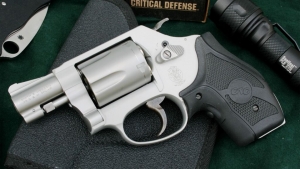
If you are going to be an armed citizen, there are certain things you have to keep in mind. The absolute first is that owning a gun and being are armed citizen are not the same thing. Anyone with cash can own a gun. From a realistic point of view, tens of thousands of criminals own guns.
Being an armed citizen means not only to actually keep and bear arms but being prepared to use said arms as a responsible member of a community – a citizen. An armed citizen differentiates himself from the armed thug, or criminal, by his sense of purpose.
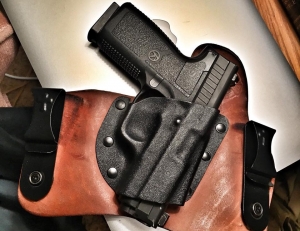
More Useful in General
Mark Rippetoe, author of the book Starting Strength and renown strength trainer, has a saying. “Strong people are harder to kill than weak people and more useful in general.” If we replace the words ‘strong people’ with ‘armed citizens’ and ‘weak’ with ‘disarmed’, we have a very appropriate way to look at the issue of what gear to carry.
“Armed citizens are harder to kill than disarmed people and more useful in general.”
If you look at the goal of the armed citizen as being harder to kill AND more useful in general, it is easy to see that we need to be more than just gun owners.
When you consider what you, as an armed citizen, should be carrying on your body, use that simple two-step test:
- Does it make you harder to kill?
- Does it make you more useful in general?
Fundamental Four
Now we are going to examine our list of the Fundamental Four. These are the must-have categories of items that fit the bill for being a genuine armed citizen. The Fundamental Four make you harder to kill and more useful to all other citizens in your community.
1. Lethal
The first of the Fundamental Four is lethal. I know that the squeamish and timid in the audience might be put off by the term “lethal”. Your timidity, or desire to do no harm, has zero bearing on the felonious monster that has decided to make you his prey.
To stop the monster from maiming or killing you, there are three things that you can do.
- Produce and display a lethal force instrument.
- Inflict physical damage, of any sort, to said monster.
- Inflict lethal damage to said monster.
Which of those three things will cause the monster to stop their deadly assault on you? The answer is that you have no way of knowing that until the monster decides to quit.
Some felonious attackers will stop when you produce a gun. Others will stop when you hurt them, even though the wound is not life-threatening. Still, other monsters will keep on attacking you regardless of your having a gun or even if you use it. Only lethal damage will stop them.
A lethal tool must be lethal; not beanbags, nor tear gas, nor noise-making blanks, not even rock salt. For a lethal tool to be an effective life-saving tool, it must actually be capable of lethality. Ergo, it will make you harder to kill.
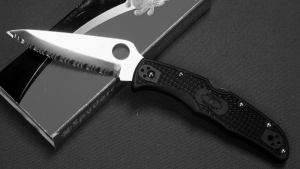
2. Sharp
Second on the Fundamental Four list is sharp. Since the dawn of man, he has understood the need to carry sharp tools. We live in an era where folding and fixed-blade knives of all shapes and sizes are so advanced that you have no excuse to not have one. Even while wearing formal attire, you can carry said light-weight knives comfortably and discreetly at all times.
There are so many utility and emergency chores for which a sharp tool can be used that I do not have time to list them here. Several years ago, I read a newspaper article about a small child’s loose jacket getting caught in the machinery of an escalator. The jacket was choking the child to death. A bystander with a pocket knife cut away the material and saved the boy’s life.
Sharp tools fit the bill for harder to kill and more useful in general.
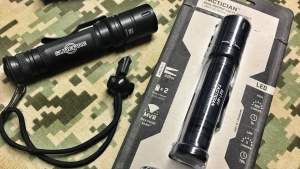
3. Bright
Number three of the Fundamental Four is bright. To this day, British people still refer to a flashlight as a “torch”. This is a carryover from a time when people needed actual flaming sticks to light their way in the dark.
Depending on the study you refer to, human beings gather 85 to 90 percent of all sensory input from their eyes. Human eyes need visible light to function, period, end of the story. When you turn out the lights, most humans devolve into helpless creatures in search of light. Very few people are accustomed to finding their way in the dark.
As with modern knives, current compact portable flashlights are very advanced. There is, again, no real reason not to have one on your person. No reason, that is, other than intellectual laziness or being cheap.
For less than $50 you can get a good flashlight that is bright and lightweight. For a greater investment, $100 to $200, you can buy an excellent flashlight that is rugged, super-bright, and still small enough to carry.
If you are carrying a gun, but no light, how do you expect to identify a threat in low or poor light? Is a person in the shadows a real threat to you, or is it an innocent person, or a bum? A $100 flashlight might seem pricey until you compare it to the attorney fees you’ll be paying after a negligent shooting.
Once more, the flashlight falls into the category of helping us be harder to kill and more useful.
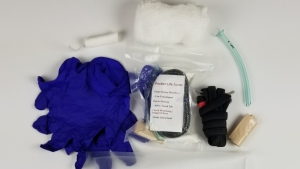
4. Medical
Last, but certainly not least, on the Fundamental Four list is medical. “When all you have is a hammer, every problem looks like a nail.” I heard that bit of wisdom 30 plus years ago.
People who get a CCW permit, and start carrying, often become fixated on problems that need to be solved with a gun. Yes, lethal is on the list, but not every problem you encounter in life is going to be a lethal force threat from a person.
Have you ever looked at the data on accidental deaths and injuries from the Center for Disease Control? You are somewhere between 500-1000 times more likely to be injured in an automobile crash than to face a lethal force attack.
We carry lethal because that is the most effective tool to stop deadly monsters. What do you carry for the greater likelihood that you, or someone you care about, will end up hurt or dying from an injury?
I have trained thousands of people in the use of lethal force, less-than-lethal force, and traumatic medicine. Feedback from the last several decades has been that my students used their medical training and gear more than anything else. Despite this, getting medical training and carrying life-saving medical gear is often a last priority for armed citizens.
I am not talking about shooting a monster and then saving their life. I am talking about saving the lives of good people. Good guys can, and do, bleed to death. Even those who carry guns can bleed to death. If your child has a partially severed arm because someone slammed your car into a ditch, do you plan to shoot the artery closed? An open artery will kill you before any ambulance has time to arrive.
Traumatic medical gear and training make you harder to kill and more useful in general.
Conclusion
That’s it folks. The fundamental four categories of items that every armed citizen should always carry are:
- Lethal
- Sharp
- Bright
- Medical
Professor Paul Markel
Latest posts by Professor Paul Markel (see all)
- Tactical Masturbation: Top 3 Stupid Human Tricks - July 8th, 2024
- Blood Trail: Fearless Fiction - June 21st, 2024
- SOTG and SB Tactical Celebrate Brace Ruling - June 20th, 2024
- Shotgun Accessories: Practical and Useful - June 14th, 2024
- Tactical Rifle Tips: Transition Drills - January 5th, 2024






Nice thought provoking article, I have had hard learned lessons on the last 3 items, always carry more than one knife, light, or band aid / med supplies, if not on your person close by, so when needed it can be put to use. To Clint Smiths credit one is none two is one Be Prepared, plan ahead, always work through the issue